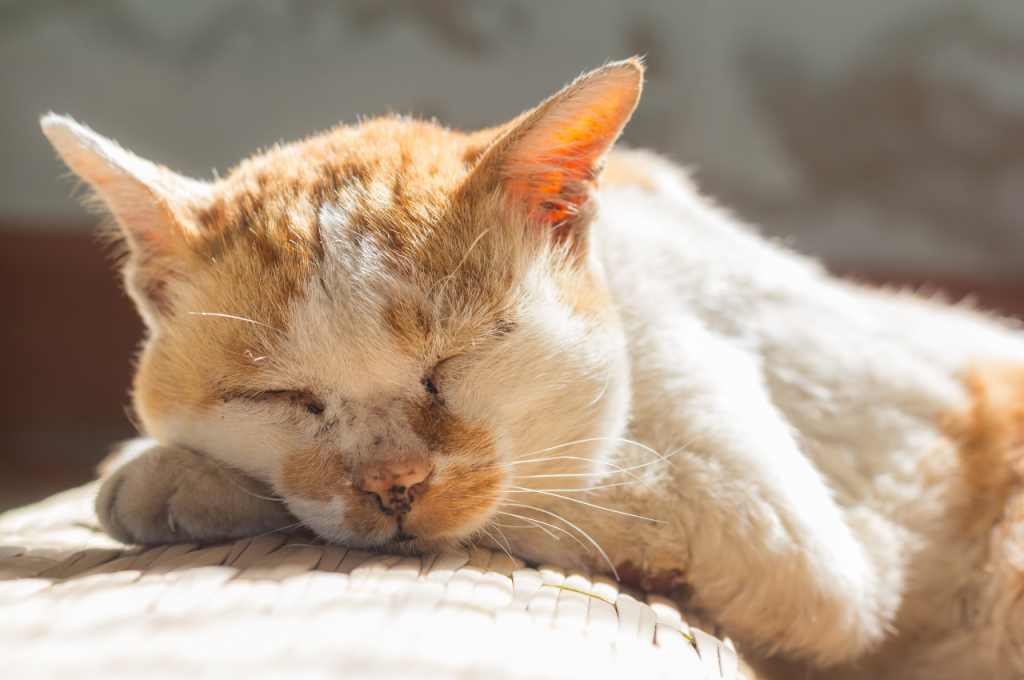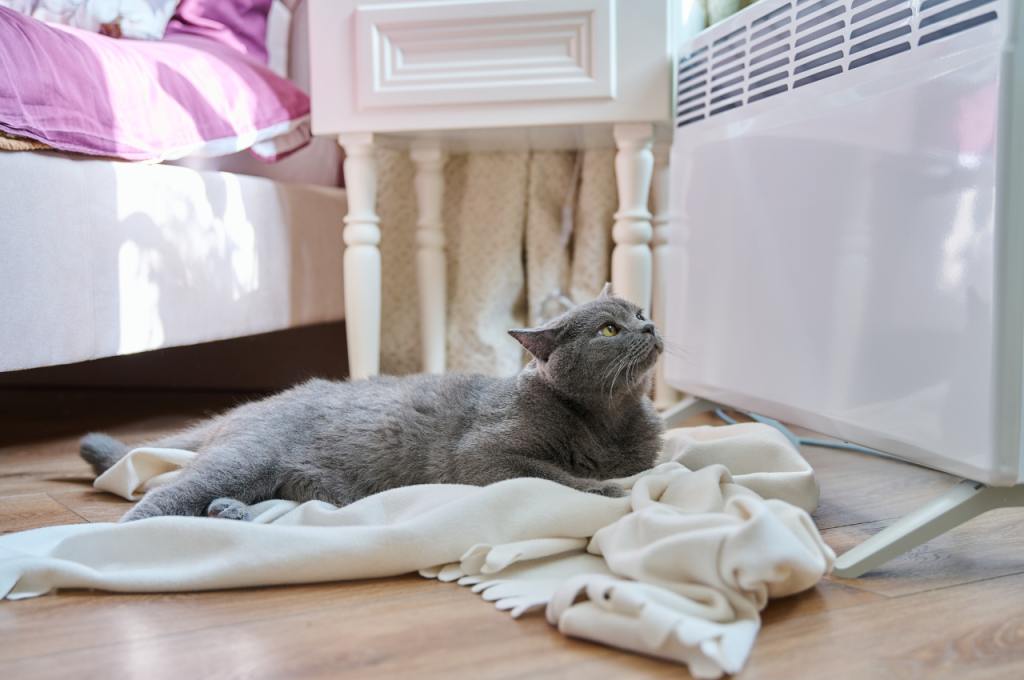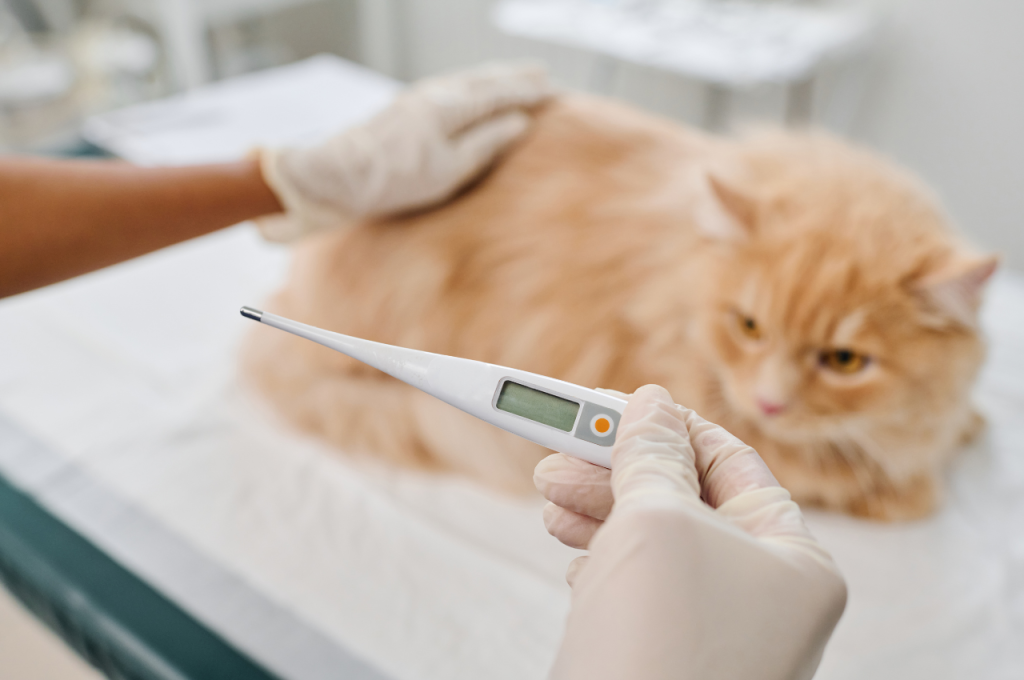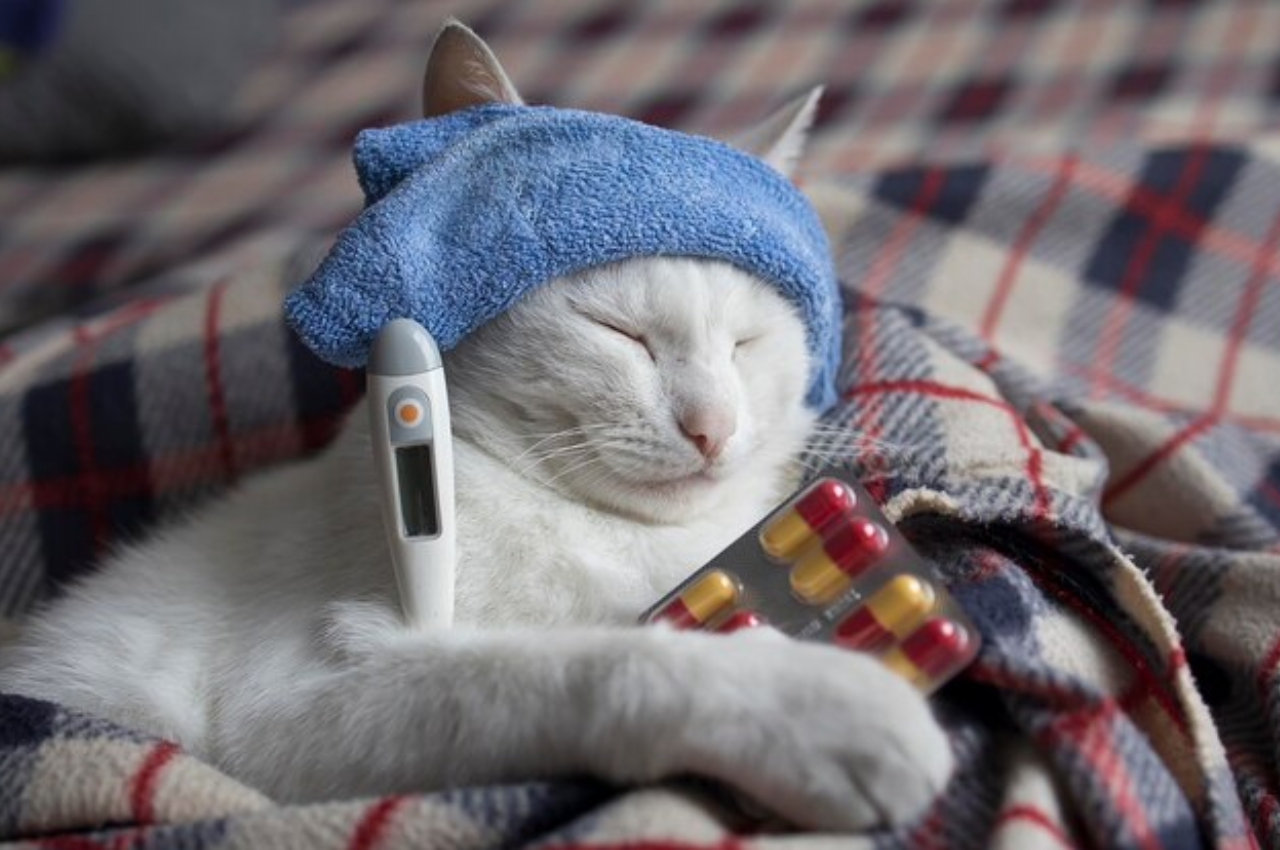Too hot for cats refers to temperatures above 90°F that can lead to heatstroke in felines. Intense heat poses serious health risks to cats.
When the weather gets too hot, it’s essential to take precautions to keep your feline companions safe and comfortable. Cats are more susceptible to heat-related issues due to their limited ability to sweat. As a responsible pet owner, it’s vital to provide plenty of fresh water, proper ventilation, and access to shade to protect your cats from overheating.
Additionally, avoiding strenuous physical activities during the hottest part of the day can help prevent heatstroke. By being mindful of the temperature and taking proactive measures, you can ensure your furry friends stay cool and healthy during the sweltering heat.
Effects of High Temperatures on Cats
Excessive heat can have severe effects on our feline friends, highlighting the importance of understanding how high temperatures impact cats.

Heat Stress in Cats
Cats are particularly sensitive to high temperatures and can quickly experience stress and discomfort in hot weather.
Dehydration and Heatstroke
As temperatures soar, the risk of dehydration and heatstroke in cats increases significantly, emphasizing the importance of providing adequate hydration and cool shelter for your feline companions.
Symptoms of Heat-related Issues in Cats
It’s crucial to recognize the signs of heat-related issues in cats to prevent potential health complications. Cats are susceptible to heat-related problems, and being aware of the symptoms can help you take prompt action to ensure your feline friend’s well-being.
Panting and Drooling
Cats typically don’t pant, so if you notice your cat breathing heavily with an open mouth, it could be a sign of overheating. Excessive drooling is another indication of heat stress in cats. These symptoms may indicate your cat is struggling to regulate its body temperature and needs immediate attention.
Lethargy and Weakness
Excessive heat can cause cats to become lethargic and weak. If your cat is unusually inactive and seems to lack energy, it might be a sign of heat-related illness. Weakness and inability to move normally can also point to heat stress, signaling the need for intervention to prevent further complications.
Preventing Heat-related Problems in Cats
During hot weather, cats are vulnerable to heat-related problems that can be extremely dangerous, and in some cases, fatal. As responsible pet owners, it is essential to take necessary precautions to protect our feline friends from excessive heat. By providing ample water and shade, and by avoiding leaving pets in cars, we can ensure their safety and well-being even during scorching temperatures.
Provide Ample Water and Shade
When the weather is hot, it’s crucial to supply your cats with plenty of fresh, cool water at all times. Proper hydration is essential in preventing heatstroke and dehydration in cats. Ensure their water bowls are kept in shaded areas, away from direct sunlight, to maintain the water’s coolness even on the hottest days. Additionally, placing multiple water bowls around your home or outdoor area can make it easier for your cats to access water whenever they need it.
Cats, just like humans, need shade to seek relief from the scorching sun. Create shaded areas in your home or garden where your cats can escape the heat. This can be achieved by using umbrellas, and tarps, or even constructing a small cat-friendly shelter. Providing comfortable, shaded areas encourages your cats to rest and relax in cooler surroundings, preventing them from overheating.
Avoid Leaving Pets in Cars
Leaving your pets in cars, even for a short period, can be extremely dangerous, especially during hot weather. The temperature inside a car can rise rapidly and become excessively hot, leading to heatstroke and potentially fatal consequences for your cat. It is important to never leave your cat unattended in a vehicle, even with the windows cracked or the air conditioning on. If you must travel with your cat, ensure someone can stay with them in the car or leave them at home where they can remain in a cool and safe environment.
Remember, prevention is key when it comes to protecting your cat from heat-related problems. By providing ample water and shade and avoiding leaving pets in cars, you can ensure your feline companion stays cool and comfortable during hot weather. Stay vigilant and prioritize your cat’s well-being to prevent any heat-related emergencies.
Creating A Cat-friendly Cooling Environment
Discover what temperatures are too hot for cats and learn how to create a cooling environment that is cat-friendly. Ensure your feline companion stays comfortable, safe, and healthy in warmer weather.

Creating a Cat-Friendly Cooling Environment When the temperature begins to rise, it’s important to ensure that your furry feline friend stays cool and comfortable. Cats are more susceptible to heatstroke and overheating than humans, so it’s crucial to create a cat-friendly cooling environment in your home. In this blog post, we will explore some effective ways to keep your cat cool during hot weather. Let’s dive in!
Use cooling mats or fans one great way to help your cat beat the heat is by providing them with cooling mats or fans. Cooling mats are designed to absorb and dissipate heat, providing a cool surface for your cat to lie on. You can place these mats in their favorite lounging areas, such as their bed or a window perch. Fans can also help circulate the air and provide a cooling breeze. Ensure that the fan is safe for your cat, and never aim it directly at them. They will appreciate the gentle airflow on a hot day.
Keep indoors cool when temperatures soar, it’s essential to keep the indoor environment as cool as possible for your cat’s comfort. Here are some tips to achieve a cooler indoor space:
1. Ensure adequate airflow: Open windows and doors to create cross ventilation. This allows hot air to escape and fresh air to enter.
2. Block out the sun: Close curtains or blinds during the hottest part of the day to reduce the amount of sunlight and heat entering the room.
3. Create shady spots: Place your cat’s bed or a cozy blanket in a shaded area of your home. This offers them a cool place to retreat.
4. Provide access to cool water: Ensure your cat has access to fresh, cool water at all times. Consider placing multiple water bowls in different areas of your home.
5. Freeze some treats: Offer your cat some frozen treats, such as ice cubes wrapped in a wet washcloth or frozen pieces of cat-friendly fruits. These tasty treats can help lower their body temperature and provide a refreshing distraction.
Remember, your cat depends on you to keep them comfortable and safe during hot weather. By taking proactive measures and creating a cat-friendly cooling environment, you can help prevent heat-related issues and ensure that your feline companion stays happy and healthy.
Signs of An Emergency
When it comes to our feline friends, it’s essential to be aware of what is too hot for cats. Recognizing the signs of an emergency caused by excessive heat exposure could be crucial in providing timely help to your cat.
Rapid Heart Rate
If you notice your cat’s rapid heart rate along with excessive panting and restlessness, it may be a sign of overheating. This physiological response to heat stress indicates the need for immediate cooling measures to prevent potential heatstroke.
Vomiting
Vomiting in cats can be a sign of heat-related issues. It is essential to monitor your cat’s condition closely, especially if it’s accompanied by other symptoms such as lethargy or disorientation. Seek veterinary assistance promptly if you observe these signs.
Immediate Actions to Cool an Overheated Cat
As responsible pet owners, it’s crucial to be aware of the environmental factors that can affect our feline companions, especially when it comes to temperature. Cats are sensitive to heat, and exposure to excessively high temperatures can pose serious risks to their health and well-being.
Move to A Cooler Area
If your cat is overheated, immediately move them to a cooler area. Find a shady spot or bring them inside where the temperature is lower.
Apply Cool (not Cold) Compress
When cooling an overheated cat, it’s crucial to use a cool (not cold) compress. Soak a towel in cool water, wring it out, and gently apply it to your cat’s body, especially around the head, neck, and underarms.
When to Seek Veterinary Assistance
Cats are sensitive to high temperatures, which can lead to heatstroke and other dangerous health issues. If you notice signs of distress or overheating in your cat, it is important to seek veterinary assistance immediately to ensure their well-being.

Conclusion
To keep your feline friend safe, understanding what’s too hot for cats is crucial. Knowing the signs of heatstroke and taking precautionary measures can make a big difference.
By being aware of the potential dangers and implementing simple strategies, you can ensure that your cat stays cool and comfortable in warm weather.
